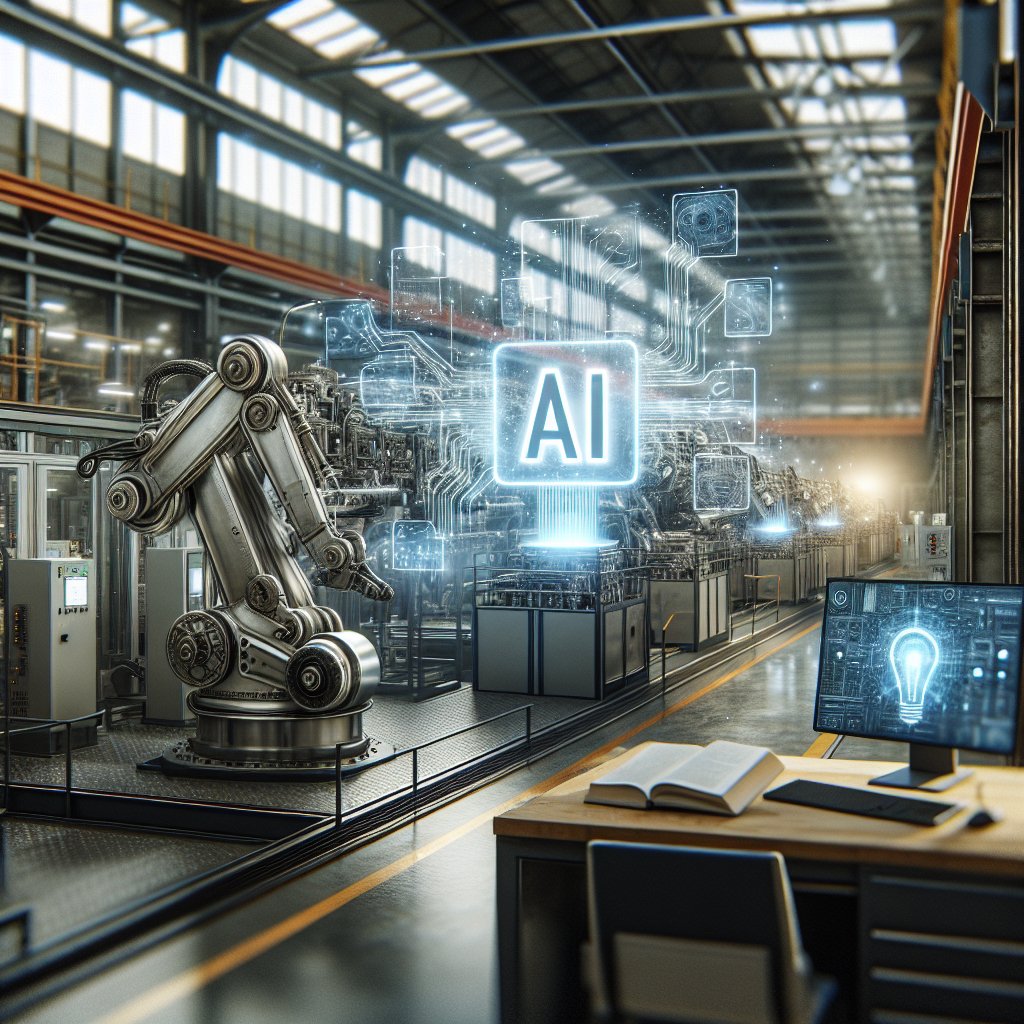
The integration of Artificial Intelligence (AI) into industrial equipment diagnostics is revolutionizing the way industries maintain and optimize their machinery. As technology continues to advance, AI is becoming an indispensable tool in predicting equipment failures, reducing downtime, and enhancing overall operational efficiency. This article delves into the profound impact AI has on industrial equipment diagnostics, exploring its benefits, challenges, and future potential.
Understanding AI in Industrial Diagnostics
Artificial Intelligence, with its ability to process vast amounts of data and learn from it, is transforming the landscape of industrial diagnostics. Traditionally, equipment maintenance relied heavily on scheduled checks and the expertise of human technicians. However, these methods often led to either unnecessary maintenance or unexpected equipment failures, both of which could be costly. AI, on the other hand, offers a more predictive approach.
By utilizing machine learning algorithms, AI systems can analyze historical data from equipment sensors to identify patterns and predict potential failures before they occur. This predictive maintenance approach not only minimizes downtime but also extends the lifespan of machinery by ensuring timely interventions. Moreover, AI can continuously learn and adapt, improving its diagnostic accuracy over time.
Key Components of AI Diagnostics
AI diagnostics in industrial settings typically involve several key components:
- Data Collection: Sensors and IoT devices collect real-time data from equipment, including temperature, vibration, pressure, and more.
- Data Processing: AI algorithms process this data to identify patterns and anomalies that may indicate potential issues.
- Predictive Analysis: Machine learning models predict future equipment behavior, allowing for proactive maintenance.
- Decision Support: AI systems provide actionable insights and recommendations to technicians and engineers.
These components work together to create a comprehensive diagnostic system that enhances the reliability and efficiency of industrial operations.
Benefits of AI in Equipment Diagnostics
The adoption of AI in industrial equipment diagnostics offers numerous benefits that extend beyond mere cost savings. One of the most significant advantages is the reduction in unplanned downtime. By predicting failures before they occur, AI systems allow for maintenance to be scheduled at convenient times, minimizing disruptions to production.
Additionally, AI-driven diagnostics can lead to significant cost savings. By optimizing maintenance schedules and reducing the need for emergency repairs, companies can allocate resources more efficiently. Furthermore, the extended lifespan of equipment due to timely maintenance reduces the need for frequent replacements, resulting in long-term savings.
AI also enhances safety in industrial environments. By identifying potential issues early, AI systems can prevent accidents caused by equipment failures. This not only protects workers but also reduces liability and insurance costs for companies.
Improved Decision-Making
Another critical benefit of AI in diagnostics is improved decision-making. AI systems provide technicians and engineers with detailed insights into equipment performance, enabling them to make informed decisions about maintenance and repairs. This data-driven approach reduces the reliance on guesswork and intuition, leading to more accurate and effective interventions.
Moreover, AI can facilitate better resource management. By predicting when and where maintenance is needed, companies can allocate their workforce and materials more efficiently, ensuring that resources are available when and where they are needed most.
Challenges and Considerations
Despite its many benefits, the implementation of AI in industrial diagnostics is not without challenges. One of the primary concerns is data quality. AI systems rely heavily on accurate and comprehensive data to function effectively. Incomplete or inaccurate data can lead to incorrect predictions and potentially costly mistakes.
Another challenge is the integration of AI systems with existing infrastructure. Many industrial facilities operate with legacy equipment that may not be compatible with modern AI technologies. Retrofitting these systems can be complex and expensive, requiring significant investment in both time and resources.
Workforce Adaptation
The introduction of AI also necessitates changes in the workforce. Technicians and engineers must be trained to work with AI systems, which can require a shift in skill sets. While AI can automate many diagnostic tasks, human oversight is still essential to interpret AI-generated insights and make final decisions.
Furthermore, there may be resistance to change from employees who fear that AI could replace their jobs. It is crucial for companies to address these concerns by emphasizing the role of AI as a tool that enhances human capabilities rather than replacing them.
The Future of AI in Industrial Diagnostics
As AI technology continues to evolve, its role in industrial equipment diagnostics is expected to expand. Future advancements in AI could lead to even more accurate and efficient diagnostic systems, further reducing downtime and costs for industries.
One area of potential growth is the use of AI in predictive analytics. As AI systems become more sophisticated, they may be able to predict not only equipment failures but also the optimal conditions for equipment operation. This could lead to further improvements in efficiency and productivity.
Additionally, the integration of AI with other emerging technologies, such as augmented reality (AR) and virtual reality (VR), could enhance diagnostic capabilities. For example, AR could provide technicians with real-time visualizations of equipment data, while VR could be used for training and simulation purposes.
Conclusion
The impact of AI on industrial equipment diagnostics is profound and far-reaching. By enabling predictive maintenance, improving decision-making, and enhancing safety, AI is transforming the way industries manage their machinery. While challenges remain, the potential benefits of AI-driven diagnostics are significant, promising a future of increased efficiency and reduced costs for industrial operations.

